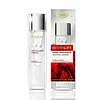What's inside
What's inside
 Key Ingredients
Key Ingredients

 Benefits
Benefits

 Concerns
Concerns

 Ingredients Side-by-side
Ingredients Side-by-side

Water
Skin ConditioningButylene Glycol
HumectantAlcohol
AntimicrobialHydroxyethylpiperazine Ethane Sulfonic Acid
BufferingPropanediol
SolventPPG-6-Decyltetradeceth-30
EmulsifyingCaprylyl Glycol
EmollientSalicylic Acid
MaskingSodium Hydroxide
BufferingP-Anisic Acid
MaskingAdenosine
Skin ConditioningCapryloyl Salicylic Acid
ExfoliatingAcetyl Trifluoromethylphenyl Valylglycine
Skin ConditioningDisodium EDTA
Parfum
MaskingMadecassoside
AntioxidantBenzyl Salicylate
PerfumingLimonene
PerfumingLinalool
PerfumingBenzyl Alcohol
PerfumingPentylene Glycol
Skin ConditioningYeast Extract
Skin ConditioningTocopherol
AntioxidantWater, Butylene Glycol, Alcohol, Hydroxyethylpiperazine Ethane Sulfonic Acid, Propanediol, PPG-6-Decyltetradeceth-30, Caprylyl Glycol, Salicylic Acid, Sodium Hydroxide, P-Anisic Acid, Adenosine, Capryloyl Salicylic Acid, Acetyl Trifluoromethylphenyl Valylglycine, Disodium EDTA, Parfum, Madecassoside, Benzyl Salicylate, Limonene, Linalool, Benzyl Alcohol, Pentylene Glycol, Yeast Extract, Tocopherol
Malpighia Emarginata Fruit Extract
Skin ConditioningEuterpe Oleracea Fruit Extract
Propanediol
SolventAlcohol
AntimicrobialNiacinamide
SmoothingButylene Glycol
HumectantMoringa Oleifera Seed Extract
Skin ConditioningMelia Azadirachta Extract
Skin ConditioningPrunus Mume Fruit Extract
HumectantNasturtium Officinale Extract
PerfumingNelumbium Speciosum Flower Extract
Skin ConditioningGlutathione
Glycerin
HumectantLecithin
EmollientBis-PEG-18 Methyl Ether Dimethyl Silane
EmollientSodium Magnesium Silicate
Adenosine
Skin ConditioningPEG-60 Hydrogenated Castor Oil
EmulsifyingWater
Skin ConditioningDisodium EDTA
Parfum
MaskingMalpighia Emarginata Fruit Extract, Euterpe Oleracea Fruit Extract, Propanediol, Alcohol, Niacinamide, Butylene Glycol, Moringa Oleifera Seed Extract, Melia Azadirachta Extract, Prunus Mume Fruit Extract, Nasturtium Officinale Extract, Nelumbium Speciosum Flower Extract, Glutathione, Glycerin, Lecithin, Bis-PEG-18 Methyl Ether Dimethyl Silane, Sodium Magnesium Silicate, Adenosine, PEG-60 Hydrogenated Castor Oil, Water, Disodium EDTA, Parfum
Ingredients Explained
These ingredients are found in both products.
Ingredients higher up in an ingredient list are typically present in a larger amount.
Adenosine is in every living organism. It is one of four components in nucleic acids that helps store our DNA.
Adenosine has many benefits when used. These benefits include hydrating the skin, smoothing skin, and reducing wrinkles. Once applied, adenosine increases collagen production. It also helps with improving firmness and tissue repair.
Studies have found adenosine may also help with wound healing.
In skincare products, Adenosine is usually derived from yeast.
Learn more about AdenosineAlcohol comes in many different forms. Different types of alcohol will have different effects on skin. This ingredient is usually an astringent alcohol.
These alcohols are drying on the skin. They may strip away your skin's natural oils and even damage your skin barrier. Astringent alcohols may also irritate skin.
Other types of astringent alcohols include:
According to the National Rosacea Society based in the US, you should be mindful of products with these alcohols in the top half of ingredients.
Any type of sanitizing product will have high amounts of alcohol to help kill bacteria and viruses.
Fatty alcohols come from plant oils such as coconut oil. These can help hydrate the skin and are non-irritating. Some fatty alcohols include cetyl and stearyl alcohol.
Learn more about AlcoholButylene Glycol (or BG) is used within cosmetic products for a few different reasons:
Overall, Butylene Glycol is a safe and well-rounded ingredient that works well with other ingredients.
Though this ingredient works well with most skin types, some people with sensitive skin may experience a reaction such as allergic rashes, closed comedones, or itchiness.
Learn more about Butylene GlycolDisodium EDTA plays a role in making products more stable by aiding other preservatives.
It is a chelating agent, meaning it neutralizes metal ions that may be found in a product.
Disodium EDTA is a salt of edetic acid and is found to be safe in cosmetic ingredients.
Learn more about Disodium EDTAParfum is a catch-all term for an ingredient or more that is used to give a scent to products.
Also called "fragrance", this ingredient can be a blend of hundreds of chemicals or plant oils. This means every product with "fragrance" or "parfum" in the ingredients list is a different mixture.
For instance, Habanolide is a proprietary trade name for a specific aroma chemical. When used as a fragrance ingredient in cosmetics, most aroma chemicals fall under the broad labeling category of “FRAGRANCE” or “PARFUM” according to EU and US regulations.
The term 'parfum' or 'fragrance' is not regulated in many countries. In many cases, it is up to the brand to define this term.
For instance, many brands choose to label themselves as "fragrance-free" because they are not using synthetic fragrances. However, their products may still contain ingredients such as essential oils that are considered a fragrance by INCI standards.
One example is Calendula flower extract. Calendula is an essential oil that still imparts a scent or 'fragrance'.
Depending on the blend, the ingredients in the mixture can cause allergies and sensitivities on the skin. Some ingredients that are known EU allergens include linalool and citronellol.
Parfum can also be used to mask or cover an unpleasant scent.
The bottom line is: not all fragrances/parfum/ingredients are created equally. If you are worried about fragrances, we recommend taking a closer look at an ingredient. And of course, we always recommend speaking with a professional.
Learn more about ParfumPropanediol is an all-star ingredient. It softens, hydrates, and smooths the skin.
It’s often used to:
Propanediol is not likely to cause sensitivity and considered safe to use. It is derived from corn or petroleum with a clear color and no scent.
Learn more about PropanediolWater. It's the most common cosmetic ingredient of all. You'll usually see it at the top of ingredient lists, meaning that it makes up the largest part of the product.
So why is it so popular? Water most often acts as a solvent - this means that it helps dissolve other ingredients into the formulation.
You'll also recognize water as that liquid we all need to stay alive. If you see this, drink a glass of water. Stay hydrated!
Learn more about Water